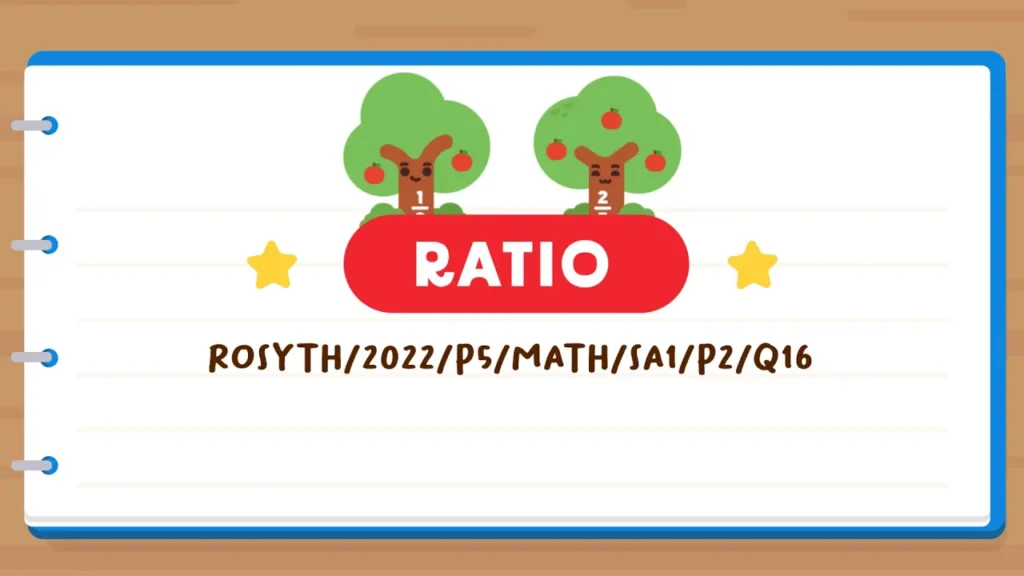Introduction
Did you know that a rectangle, when divided equally diagonally, forms two triangles with equal areas?
This key concept will help you solve this question on the topic of Ratio from the 2022 Rosyth School P5 SA1 Examination Paper.
Keep on reading if you want to learn more about this useful trick in solving this commonly tested P5 Math word problem sum.
Alternatively, you can also watch my explainer video by clicking this link.
Let’s Take A Look At This Ratio Question
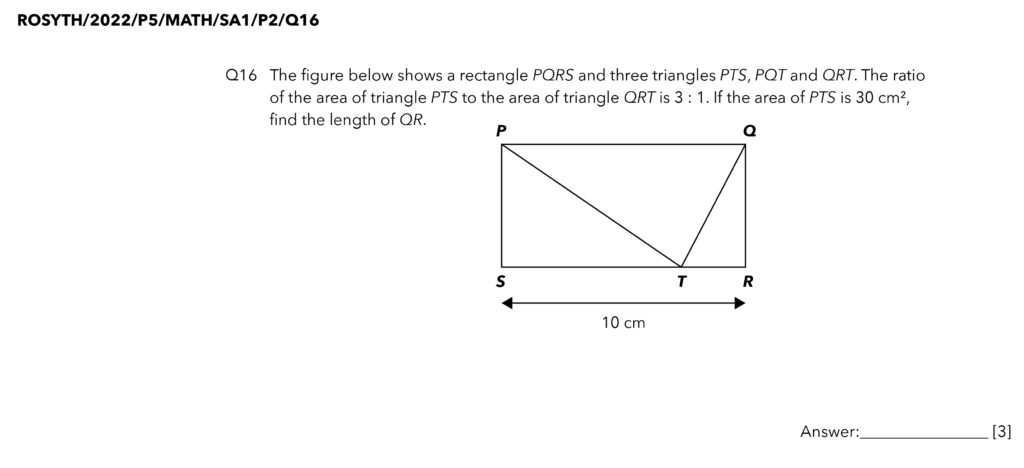
Source: Rosyth School – 2022 P5 SA1 Examination Paper [Q16]
Read Also:
Thought Process
Let us begin by highlighting the keywords in the question.
The figure below shows a rectangle PQRS, which we highlight in grey.
There are also three triangles, PTS (highlighted in blue), PQT (highlighted in green) and QRT (highlighted in orange).
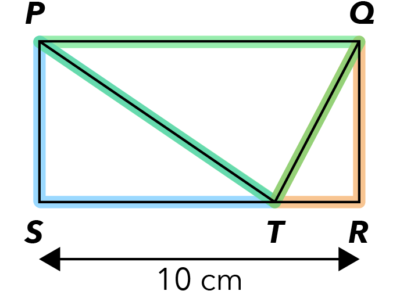
Did you know that when you divide a rectangle equally diagonally, you will have two triangles equal in area?
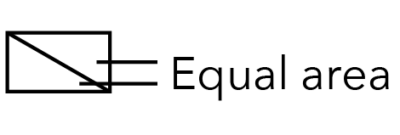
Using triangle PQT, the length of the rectangle, PQ, gives us the base of triangle PQT and the breadth of the rectangle, QR, gives us the height of triangle PQT.
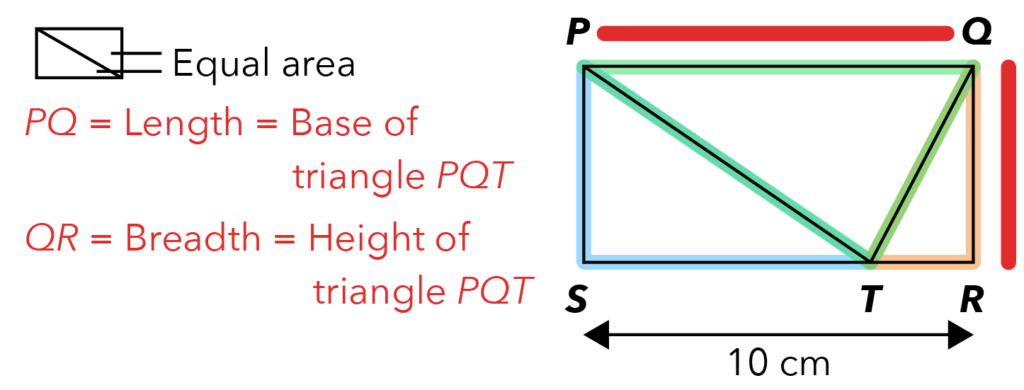
So to find the area of triangle PWT, which is equal to half of the rectangle PQRS, we can apply the formula of finding the area of triangle which is 1/2 x length x breadth or 1/2 x base x height.
Thus, the area of the green triangle PQT is 1/2 x PQ x QR.
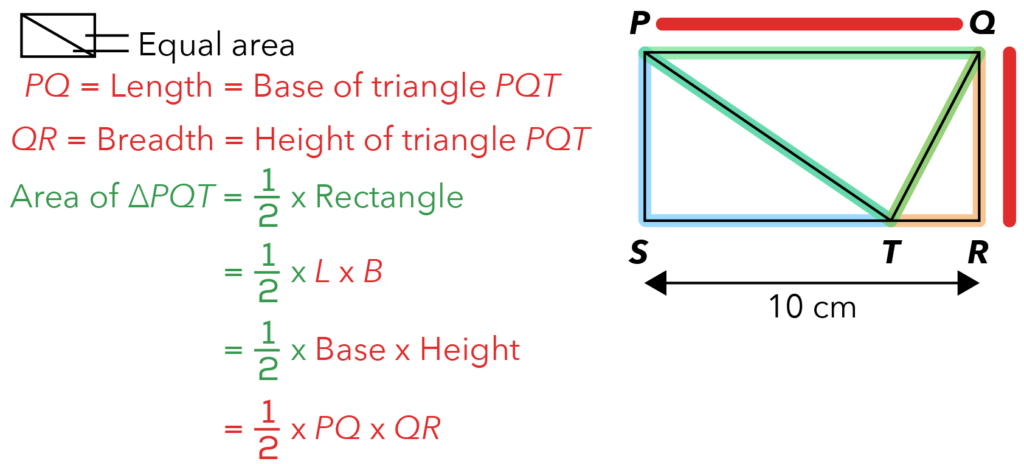
The question also says that the ratio of the area of triangle PTS to the area of triangle QRT is 3:1.
In the diagram below, I marked out 3 units in triangle PTS and 1 unit in triangle QRT.
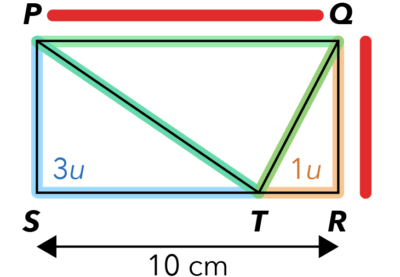
What do you observe about these 3 triangles in the diagram? What is their relationship?
Since the area of green triangle PQT (1/2 x PQ x QR) is half of the rectangle PQRS, naturally, the other half of the rectangle equates to the total area of blue triangle PTS + orange triangle QRT.
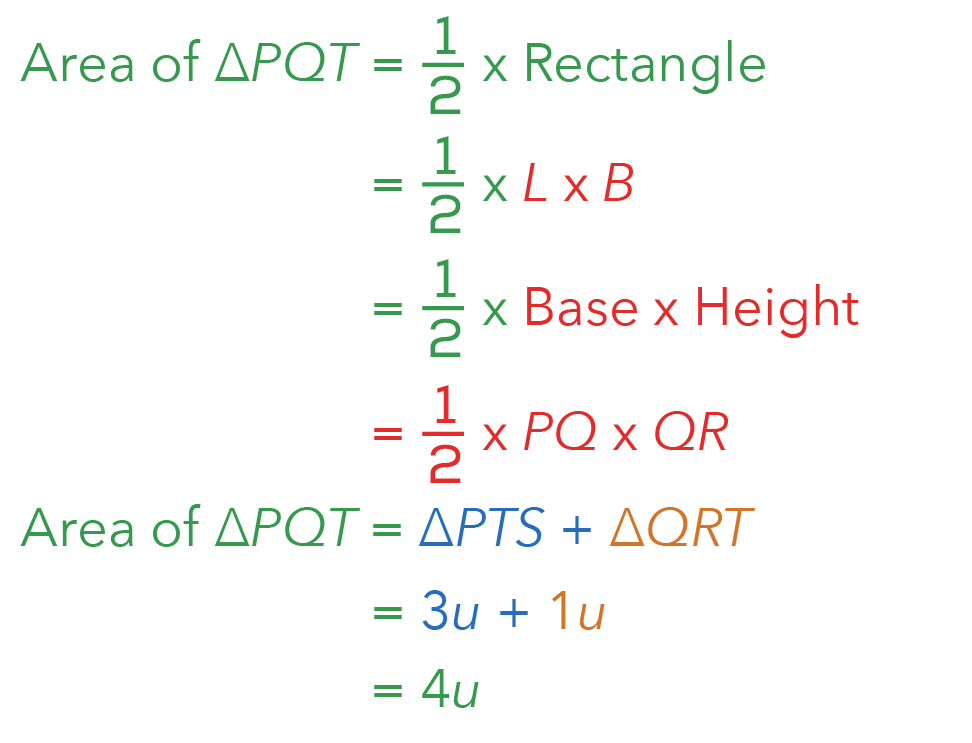
Remember that the question said that the area of PTS is 30 cm².

Source: Rosyth School – 2022 P5 SA1 Examination Paper [Q16]
Since blue triangle PTS is 3 units, this means that 3 units = 30 cm².

Now, let us find 1 unit. We will have an answer of 10 cm².
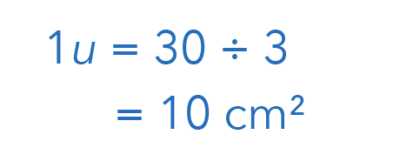
But what does the question want us to find? It is asking us to find the length of QR.
Let us first find the area of rectangle PQRS, which is the total area of all 3 triangles. This will give us 8 units.
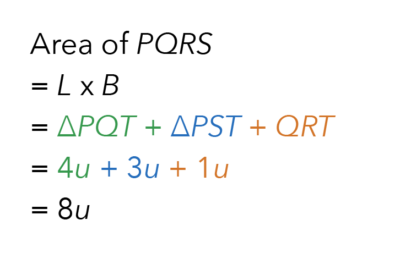
How much is 8 units? That will give us 80 cm².
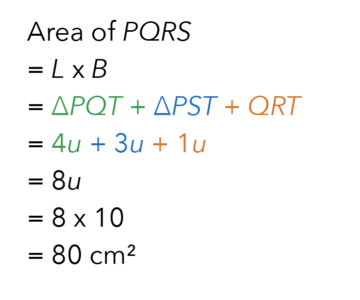
Recall the area of the rectangle is equal to length x breadth.
We already know that the length is 10 cm, and the area of the rectangle is 80 cm².
We can now find QR, which is the breadth.
We simply have to work backwards by taking the whole area of the rectangle, divided by its length of 10 cm, we will find its breadth of 8 cm, which is the final answer to the question.
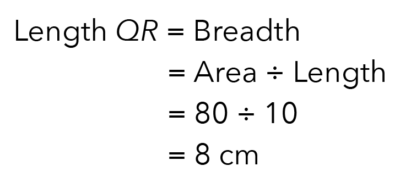
Suggested Answer For Q16
8 cm
Conclusion
Remember that when you divide a rectangle diagonally equally, you will get two triangles with the same area.
Since the area of the rectangle is length x breadth where length equates to the base of the triangle and breadth equates to the height of the triangle, dividing a rectangle diagonally shows how each triangle takes up half of that space.
Understanding this concept will come in handy when solving such similar P5 Math questions!
Stay tuned for more P5 Math blog posts!

If you like our methodology, we've some ongoing weekly Math classes:


